Plenary Talks

Alexander Pisarchik
(In-person)
Isaac-Peral Chair in Computational Systems Biology
Center for Biomedical Technology
Universidad Politécnica de Madrid, Spain
Ring of Synchrony: Exploring the Intricate Dynamics of Rotating Waves in Coupled Oscillator Networks
Abstract: Synchronous dynamics in networks of coupled oscillators has attracted high interest, considering the pervasive presence of complex networks in our daily lives, such as various transport, energy, communication, social, and neural networks. Among different network structures, the ring configuration holds special significance due to its capacity to generate rotating waves propagating along the ring of interconnected nodes. These waves manifest as stable periodic, quasiperiodic, or chaotic orbits, arising from the phase difference between neighboring oscillators. The intricate dynamics of rotating waves is elucidated through various techniques, including time series analysis, phase-space analysis, bifurcation diagrams, spectral analysis, and basins of attraction. These methods carefully uncover the complex routes from coexisting stable equilibria to hyperchaos. The vast body of research on rotating waves provides insights that are essential for a wide range of scientific disciplines and real-world applications, including lasers, chemical reactions, cardiorespiratory systems, and even beyond, with particular relevance to neural networks and brain functions.
Bio: Alexander Pisarchik is Chair of Computational Systems Biology at the Center for Biomedical Technology, Universidad Politécnica de Madrid, Spain. In 1990, he earned a PhD degree in Physics and Mathematics from the Institute of Physics of the Belarus Academy of Science, and in 1997 completed special courses on “Nonlinear Dynamics in Physiology and Medicine” at McGill University, Montreal, Canada and “Time Evolution of Complex Systems” in Lisbon, Portugal. Since 1992, he has been awarded grants from governments of various countries and has conducted research in Belgium, Spain, Iceland, and Mexico. His impactful contributions span a wide range of fields, including neural and laser dynamics, nonlinear and stochastic analyses of neuronal networks, synchronization, multistability, cognitive neuroscience, and brain-computer interfaces. He is the author of several monographs, diverse book chapters, and patents, in addition to having authored more than 300 papers published in peer-reviewed scientific journals. Furthermore, he serves as a Board Member of International Physics and Control Society (IPACS) and holds membership in the Consorcio de Investigación Biomédica en Red (CIBER).

Sergey Prants
(In-person)
Head of Dept. of Ocean and Atmospheric Physics at Pacific Oceanological Institute of Russian Academy of Sciences, Vladivostok, Russia,
Corresponding member of Russian Academy of Sciences
Transport Barriers in Oceanic Flows
Abstract: Large-scale transport barriers in the oceanic flows are considered from the point of view of dynamical systems theory. Transport barriers are material lines in 2D flows and surfaces in 3D flows across which the flux is zero due to purely advective processes. They can be classified into elliptic, parabolic and hyperbolic barriers. I discuss the dynamical systems theory methods for extracting elliptic and parabolic transport barriers in simple kinematic and dynamic models of vortical and jet flows. Special attention is paid to discussion of importance of hyperbolic transport barriers in some practical issues as anthropogenic and natural pollution.
The work was supported by the Russian Science Foundation (project no. 23-17-00068).
Bio: Sergey’s research activities have been varied, ranging from quantum study on atom-light interactions, to investigation of sound propagation in the ocean using Hamiltonian mechanics methods and to study of transport and mixing processes in geophysical flows using dynamical systems theory methods. He is actively delevoping Lagrangian methods to study ocean fronts, eddies and marine life. He received PhD in Phys. and Math. in 1981 and Dr. Sci. degree in 1992 from Institute of Physics, Minsk, USSR and was elected to Russian Academy of Sciences in 2022. Sergey worked as visiting researcher in P. Lebedev Physical Institute, Moscow, Courant Institute of Mathematical Sciences at New York University, Institute for Pure and Applied Mathematics at University of California in Los Angeles, Galilei Institute for Theoretical Physics, Florence, Italy and gave lectures at Xi’an Jiao Tong University and Nanjing University of Information Science and Technology, China. He authored around 200 peer-reviewed articles in journals indexed in the Web of Science core collection and a few books with the present Hirsch citation index of 29. Prof. Sergey Prants entered the top 2% of the most cited scientists in the world by number of citations in Scopus (2023) https://elsevier.digitalcommonsdata.com/datasets/btchxktzyw/6. He is a member of editorial boards of Journal of Russian Laser Research (Springer), Journal of Environmental Accounting and Management (L& H Scientific Publishing) and Russian Journal of Nonlinear Dynamics. Sergey is the winner of the International Zaslavsky Award in nonlinear science and complexity (2014). In 2006, he was awarded Award in theoretical physics by the Far Eastern Branch of the Russian Academy of Sciences.
Lagrange Award Lectures
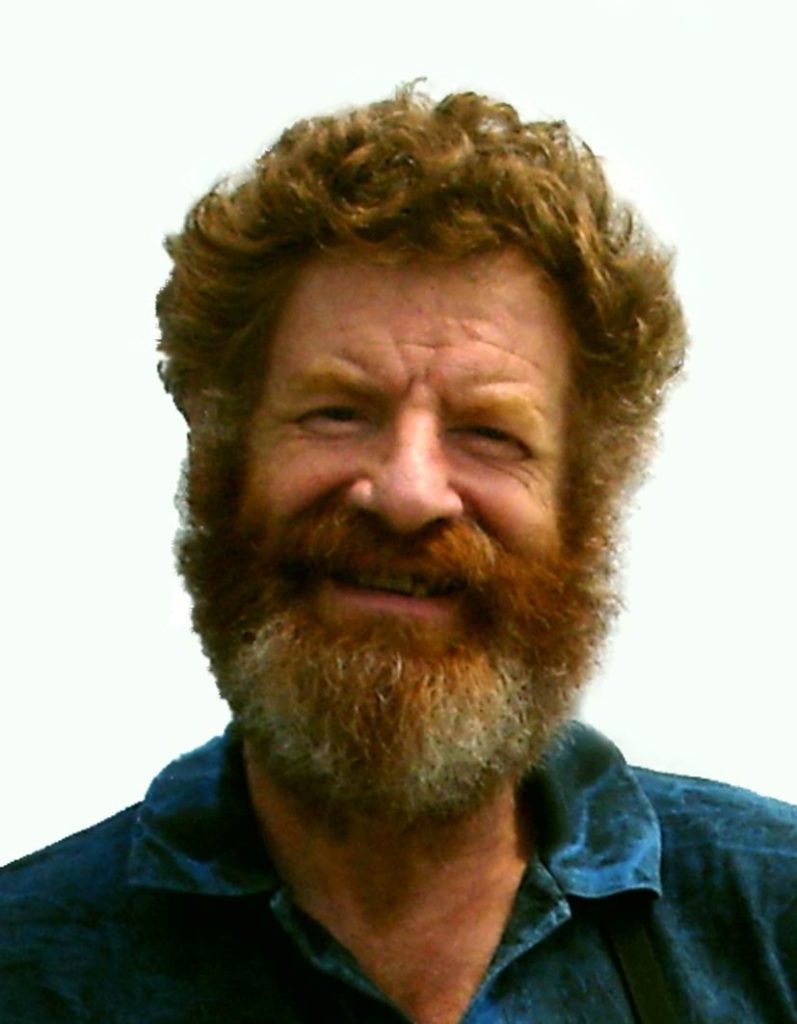
Efim Pelinovsky
(Online)
Institute of Applied Physics, Nizhny Novgorod, Russia
National Research University – Higher School of Economics, Nizhny Novgorod, Russia
Corresponding Member of the Russian Academy of Natural Sciences
KdV-like Models in the Physics
Abstract: The role of the Korteweg-de Vries equation in nonlinear physics and mathematics is well known. The exact solution of the Cauchy problem, already obtained 55 years ago, proved the crucial role of solitary waves (solitons) in the evolution and interaction of nonlinear wave fields. The modified Korteweg-de Vries equation has the same properties, in which the quadratic nonlinearity is replaced by the cubic one. After that, attempts were made to find integrable versions in more general families of the KdV-like equations, but most of these equations did not find application in physics. The presentation discusses families of KdV equations that are used in physics, but they are not integrable. In general, equations of the type u_t + f(u) u_x + u_xxx = 0 (nonlinear function f(u) can be non-analytic) are considered, which include both integrable versions (KdV, mKdV, Gardner) and non-integrable ones (Shamel, modular, log, etc). It is shown that the fundamental dynamics of solitons in such systems is practically the same (almost elastic interaction of solitons), although the quantitative parameters of the interaction are different. The mechanisms of rogue wave formation in the KdV-like soliton gas are discussed.
Bio: Efim Pelinovsky, born on July 12, 1945, in Kemerovo, Russia, is a distinguished scientist in the field of physics and applied mathematics. He is a Chief Scientist at the Institute of Applied Physics of the Russian Academy of Sciences and a Professor at the National Research University – Higher School of Economics in Nizhny Novgorod, Russia. Additionally, he serves as an Advisory Professor at Shanghai Jiao Tong University in China.
Prof. Pelinovsky earned his Ph.D. in Physics and Mathematics from Gorky State University in 1972 and received his Doctor of Science degree in 1981. He has been recognized with numerous prestigious awards, including the L. Mandelstam Prize (2018) and the EGU Sergey Soloviev Medal (2006), for his groundbreaking work in tsunami and rogue wave research.
With over 700 publications and an h-index of 46, his contributions to the scientific community are substantial. He has co-authored several influential books, such as “Extreme Ocean Waves” and “Rogue Waves in the Ocean,” and has supervised 25 Ph.D. theses. Prof. Pelinovsky is also an Associate Editor for the “Journal of Ocean Engineering and Marine Energy” and a member of several editorial boards and scientific councils.
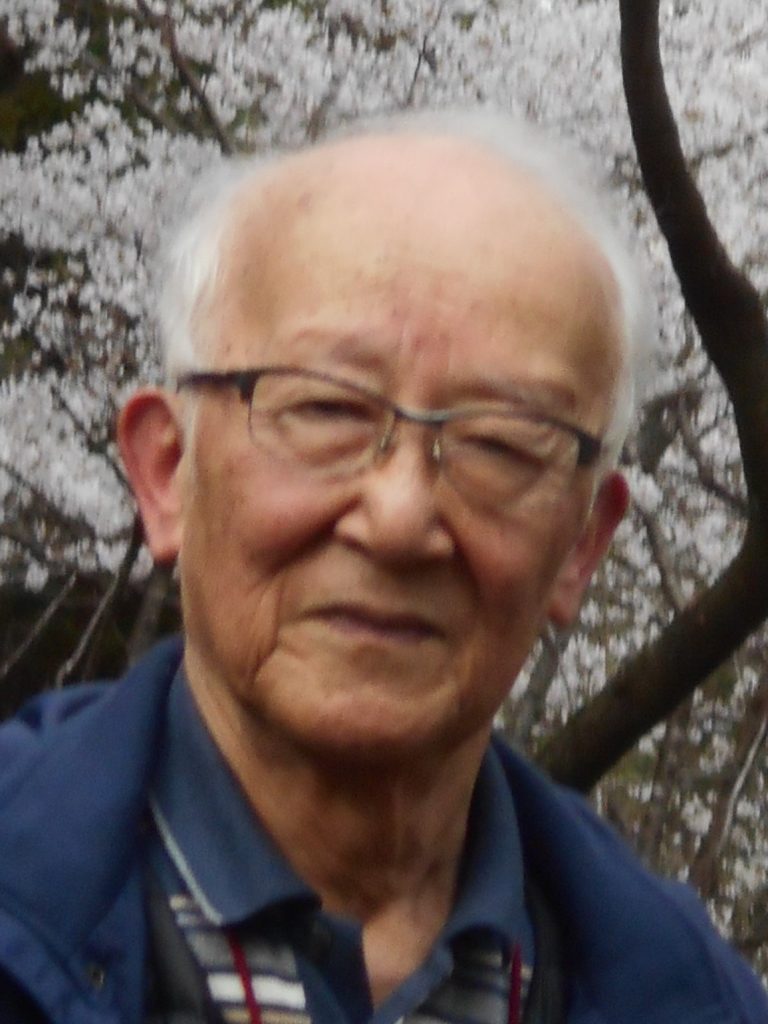
Yoshisuke Ueda
(Online)
Kyoto University, Japan
What Does a State Point in Chaos Phenomenology Imply?
Abstract: In non-linear oscillation theory, chaotic phenomena in two-dimensional nonautonomous periodic systems are represented by transformations (or maps) defined by using solutions of the equation. “The chaotic attractor”, which is a drawing of the observational or computer experimental results of the phenomenon. However, there are many unsolved problems concerning the exact solution of the original equations suggested by the chaotic attractor of the numerical experimental results.
To note some of them:
It is well known that the theoretical chaotic attractor contains an infinite number of saddle-type fixed and periodic points (groups). How then are the number and distribution explained?
What are the elements that make up the chaotic attractor (invariant connected closed set), other than the above-mentioned periodic points (a simplified expression in which a fixed point is regarded as 1 periodic point)?
Is the complete group whose initial value is any point constituting the chaotic attractor, the chaotic attractor itself? Is it a proper subset of the attractor?
Only in the former case can the observed chaotic time series be considered an approximation of the theoretical chaotic stationary solution?
If irregular time series are to be discussed as a subject of natural science, shouldn’t irregularity be introduced into the equations themselves, rather than deterministic equations?
Et cetera.
In order to clarify the above questions, numerical experiments were carried out on the Duffing equation. Based on the results of the experiments, the author attempted to discuss and examine them and obtained some results that were satisfactory in his own way.
In a nutshell, they are:
Any single state point on the chaotic attractor that a numerical experiment represents or that is in the process of consideration or study is denoted by a disk (a connected open neighbourhood of arbitrarily small radius). The (theoretical) disc contains not only an uncountable infinite number of periodic points and doubly asymptotic points, but also wandering points. Moreover, these doubly asymptotic points are the initial values connecting any two periodic points of the attractor
Note: The “periodic points” used here may also represent fixed points, as described above, and they are all “saddle-shaped periodic points”.
These hypotheses are based on what the author has heard the results say about the folding and fractal-like stacking of the shortest-period periodic points in a chaotic attractor, in the example, the invariant branches of period 1, or directly unstable fixed points, while iteratively examining the iterative mapping.
Although this is not a description of the results of a theoretical study, it cannot be said that there are no assumptions in what the author heard, judged and understood.
We hope that you will consider them rigorously.
It may be longer than a word, but it is inferred that the disk also contains a myriad of special-type doubly asymptotic points (non-hyperbolic doubly asymptotic points) are ever-present in the chaotic attractor.
If this hypothesis is true, the conditions for structural stability of chaotic attractors must be reviewed. The author also presents his own conclusions on the “window mechanism” observed in the chaotic region.
The results of the above experiments and the process of discussion and examination are introduced in the author’s book, Theory of Chaotically Transitional Phenomena, Nippon Printing Publication Co., Ltd. (2022).
The above article is in Japanese, but the English abstract can be found at the following URL.
URL(1) https://chaos.amp.i.kyoto-u.ac.jp/en/uncovering-the-nature-of-chaos/
In addition, a series of research results and other publications in which the author has been involved can be found at
URL(2) https://repository.kulib.kyoto-u.ac.jp/dspace/handle/2433/71101
Finally, although the author would like to publish an enlarged and revised edition of his book in English, he is not sure when this will happen. However, if you understand the above outline of the English text, you will be able to understand the formulas, figures and tables in the Japanese text, so there may be little need for an English translation. %For readers who are interested, it would be quicker to read his book itself (see URL below for where to obtain a copy).
Interested readers would be quicker to take a glance at his book itself (see URL below for availability).
URL(3) https://www.jpp.co.jp/
Two years have passed since the author’s book was published. Although it was difficult to notice at the time of publication, it now feels like a mere report of experimental results due to a lack of examination and consideration, and insufficient elaboration. However, we have not noticed any dubious points in the experimental results themselves.
Bio: Yoshisuke Ueda is Professor Emeritus, Kyoto University, Kyoto, Japan. He graduated from the Department of Electrical Engineering, Faculty of Engineering, Kyoto University in 1959, completed his postgraduate studies in Electrical Engineering at the Graduate School of Engineering, Kyoto University in 1964 and was employed as an assistant at the Faculty of Engineering, Kyoto University.
In 1965, he submitted a paper entitled “Some Problems in the Theory of Nonlinear Oscillations” and was awarded a Doctor of Engineering from Kyoto University..
The author was subsequently promoted from assistant to lecturer and then to assistant professor, and in 1985 he became a professor in the chair responsible for power system engineering.
Many people (outside the university and abroad) seem to see the author as a theorist, but in reality he is a technologist (in fact, he feels uneasy with theory alone and unconvinced with phenomena alone; he thinks he is a halfway person who is neither one nor the other).
In the spring of 2000, the author retired from Kyoto University, and at the same time was fortunate to be appointed as a professor at the newly established Department of Complex Systems Science, Faculty of Information Science, Future University Hakodate, from which he retired in the spring of 2007.
See the Selection 7 in URL (2) for a collection of publications, including research work related to non-linear science during this period. This publication is a result of the efforts of Professor Emeritus Ralph Abraham (UC. SC) and Dr. Bruce Stewart (BNL. NY).
Zaslavsky Award Lectures
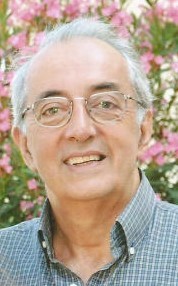
Anastasios Bountis
(In-person)
University of Patras, Greece
Corresponding Member of the Academy of Athens
Long Range Interactions Enhance Global Stability in 1-D Hamiltonian Lattices
Abstract: Local and global stability properties of 1-D Hamiltonian lattices of N interacting particles have been studied extensively, in view of their important implications to many problems of mathematical physics. A wealth of important results published since the pioneering numerical results of Fermi, Pasta, Ulam and Tsingou (FPUT) in the early 1950’s, have greatly enhanced our understanding of such lattices in the case of nearest neighbor interactions. On the other hand, the importance of long-range forces to statistical physics has also been pointed out in many works. More recently, the non-extensive statistical analysis of FPUT 1-D lattices has revealed that long-range forces increase the global stability of the dynamics and lead to a novel view of their phase transition diagram. In the last few years, this has further been supported by studies of the remarkable supratransmission phenomenon, where the first particle of a 1-D lattice is subjected to sinusoidal forcing: The critical amplitude for destabilizing the system increases as the interaction range goes to zero, except in the presence of local potentials.
Keywords: 1-D Hamiltonian lattices, long ranges of interaction, stability and statistics
Bio: Anastassios (Tassos) Bountis is Professor Emeritus of the Department of Mathematics, University of Patras, Greece, where he worked from 1986 – 2016. He has been the director of the Center for Research and Application of Nonlinear Systems of the University of Patras, https://thalis.math.upatras.gr/~crans/ In 2014 he was elected Corresponding Member of the Academy of Athens in the chair of complex systems. In 2015 he was elected member of the European Academy of Science and Arts, at Salzburg, Austria.
He obtained his Ph.D. degree in Physics from the University of Rochester, N.Y., in 1978, and has taught at universities in the U.S.A. until 1985. He was invited lecturer and researcher in several countries in Europe, Mexico, India, Japan, Brazil, New Zealand, Australia and South Korea. His research has been supported by many U.S., European and Greek grants, including an ORAU grant from Nazarbayev University and a grant of the Russian Ministry of Education.
He has organized in Greece 5 international conferences, 30 Greek summer schools on “Nonlinear Dynamics and Complexity” and 5 International PhD Schools on “Mathematical Modeling of Complex Systems”. He has authored 7 books in Greek and one in English on “Complex Hamiltonian Dynamics” (Springer Synergetics, 2012). He has supervised 20 M.Sc. theses and 15 Ph.D. theses and is on the Editorial Board of 5 International Journals. He has published more than 170 papers in refereed journals and 58 in conference proceedings, and has nearly 7000 citations, h-index: 44, i10-index:138 (Google Scholar).
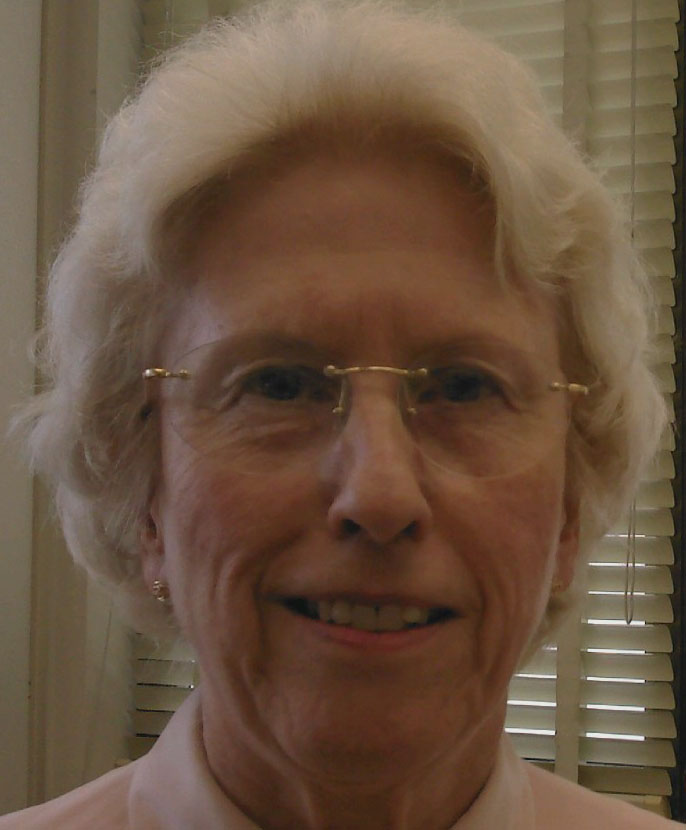
Linda Reichl
(Online)
The University of Texas, Austin, USA
The Thermalization of Quantum Systems
Abstract: The mechanisms by which quantum systems become thermalized are not yet completely understood. It is known that an isolated quantum gas of interacting hard sphere particles thermalizes because the hard sphere dynamics is chaotic. Isolated hard sphere quantum gases are ergodic with single-particle distribution functions given by the Maxwell-Boltzmann distribution. There is growing evidence that the dynamics of isolated weakly interacting particles can become chaotic when confined by potential energy distributions with broken spatial symmetry such as the Sinai billiard or the Bunimovitch billiard. These billiards induce K-flow in the single-particle dynamics of the interacting gas, and the weak interactions between the particles may allow these gases to thermalize. We show some examples of chaos in the single particle dynamics of lattice systems, and some scattering systems, that may allow thermalization may occur if the particles are weakly interacting.
Bio: Linda Reichl is Professor of Physics, and co-Director of the Center for Complex Quantum Systems, at the University of Texas at Austin. She has published 180 research papers on topics ranging from classical and quantum chaos theory, stochastic physics, scattering theory for a variety of systems, and the hydrodynamic theory of transport processes in binary mixtures, superconductors and Bose-Einstein condensates. She has supervised PhD dissertations of 38 students (to date) and Master’s theses of 14 students. She is author of the textbook, “A Modern Course in Statistical Physics” (now in its 4th Edition (2016), published by Wiley-VCH). She is also author of the book “The Transition to Chaos” (now in its 3rd Edition (2021), published by Springer-Verlag). In 2000, she was elected “Fellow of the American Physical Society” for “original work in the field of quantum chaos”.

Arkady Pikovsky
(Online)
University of Potsdam, Germany
Populations of Oscillators as a Complex System Benchmark: from Integrability to Disorder
Abstract: Fifty years ago, Yoshiki Kuramoto formulated his famous model of coupled oscillators, showing a transition from disorder to synchrony. Since then, it has been generalized in different directions and used in many applications, but it remains a paradigmatic example of a complex system out of equilibrium. In this talk, I first introduce the classical approaches of Kuramoto and Ott and Antonsen. Then, I discuss the integrability of the population ensemble in the thermodynamic limit of a large number of units. The second part of the talk is devoted to the effects of disorder in interactions of oscillators. I show how to perform averaging to reduce a disordered system to an effective regular ensemble. Finally, a maximally disordered system is shown to possess certain regularity, but a non-traditional order parameter is needed for its characterization.
Bio: Prof. Arkady Pikovsky’s research activities cover a wide range of topics in nonlinear physics, including chaos theory, stochastic processes, and complex oscillatory systems. He earned his PhD in Physical and Mathematical Sciences from Gorky State University in 1982 and completed his Habilitation at the University of Potsdam in 1995. Prof. Pikovsky has held positions at the Institute of Applied Physics in Russia, the University of Wuppertal in Germany, and the Max Planck Nonlinear Dynamics Group before becoming a C3-Professor for Theoretical Physics at Potsdam University in 1997.
Prof. Pikovsky’s extensive body of work includes over 300 papers in refereed journals and three books. His research primarily focuses on synchronization phenomena in chaotic systems, disordered nonlinear systems, and noise-induced phenomena. He has also supervised 17 PhD students.
Prof. Pikovsky has received numerous honors, including the Alexander von Humboldt Fellowship and being named a Fellow of the American Physical Society. He has served on editorial boards for several prestigious journals, such as Physical Review E and Physica D. Prof. Pikovsky’s contributions to nonlinear science are highly cited, with over 17,581 citations on Web of Science and 40,932 on Google Scholar.
Hsu Award Lectures

Guanrong (Ron) Chen
(In-person)
City University of Hong Kong, Hong Kong
Member of Academia Europaea and a Fellow of The World Academy of Sciences
Chaos in a Finite-Dimensional Linear System with Weak Topology
Abstract: In this talk, we discuss a case of Li-Yorke chaos from a linear system of differential equations in a finite-dimensional Euclidean space with a weak topology, where a solution flow of the system is proved to be Li-Yorke chaotic under some mild conditions. We will also show that there is a sequential version of Li-Yorke chaos generated by iterating a bounded linear map on a finite-dimensional space with a weak topology under some mild conditions.
Bio: Professor Chen is the “Hong Kong Shun Hing Education and Charity Fund Chair Professor in Engineering” at City University of Hong Kong. From 1987 to 1990 he worked at Rice University and from 1990 to 1999 at the University of Houston, USA. Since 2000, he has been working as a chair professor at City University of Hong Kong, founding the Centre for Complexity and Complex Networks.
He was elected IEEE Fellow in 1997 and is now Life Fellow. He was awarded the 2011 Euler Gold Medal from Russia and conferred Honorary Doctor Degrees by the Saint Petersburg State University, Russia in 2011 and by the University of Le Havre, Normandy, France in 2014. He is a Member of Academia Europaea and a Fellow of The World Academy of Sciences. Since 2010, he has been serving as the Editor-in-Chief for the International Journal of Bifurcation and Chaos.
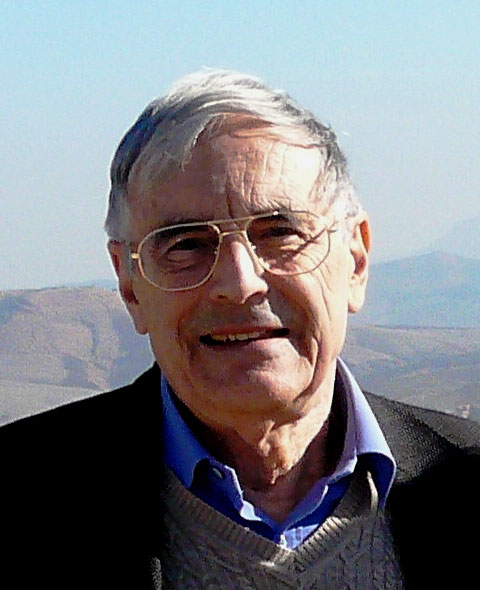
René Lozi
(In-person)
Laboratory Jean-Alexandre Dieudonné, University Côte d’azur, Nice, France
Do Chaotic Dynamical Systems Contribute to the Advancement of Science or Are They just a Mathematical Curiosity?
Abstract: Since the seminal work of Henri Poincaré on the three-body problem, and more recent research dating back to the second half of the 20th century on chaotic dynamical systems, many applications have emerged in different domains (biology, economics, electronic, cryptography, physics, etc.).
The “butterfly effect” reveled by Edward Lorenz in 1963 and the word “chaos” coined by James A. Yorke in 1975 have brought global awareness of these concepts often not actually understood by the public. However, it is only at the beginning of 90’ that the applications of chaotic properties of dynamical systems were introduced with the pioneering idea of synchronization of two chaotic attractors of Louis M. Pecora and Thomas L. Carroll.
We try to describe the evolution of the last 50 years on the subject and to find out whether applications are useful for the advancement of science, and what might be the future trends for this domain of mathematics.
Bio: Rene LOZI is emeritus Professor at University Cote d’Azur, Dieudonné Center of Mathematics, France. He completed a PhD in 1975 and the French State Thesis (on chaotic dynamical systems) under the supervision of Prof. Rene Thom (Fields medallist) in 1983.
In 1991, he became Full Professor at University of Nice and IUFM (Institute for teacher trainees). He has served as Director of this institute (2001-2006) and as Vice-Chairman of the French Board of Directors of IUFM (2004- 2006). He is a member of several editorial boards of international journals. In 1977, he discovered a particular mapping of the plane having a strange attractor (now, commonly known as “Lozi map”). Nowadays, his research areas include complexity and emergence theory, dynamical systems, bifurcations, control of chaos, cryptography based on chaos, and recently memristors (physical devices for neurocomputing) and artificial intelligence. He is working in those fields with renowned researchers from many countries. He received the Dr. Zakir Husain Award 2012 from the Indian Society of Industrial and Applied Mathematics during the 12th biannual conference of ISIAM at the University of Punjab, Patialia, (India) in January 2015.
Since August 2023, he is Vice-President of the International Society of Difference Equations.
Afraimovich Award Lectures
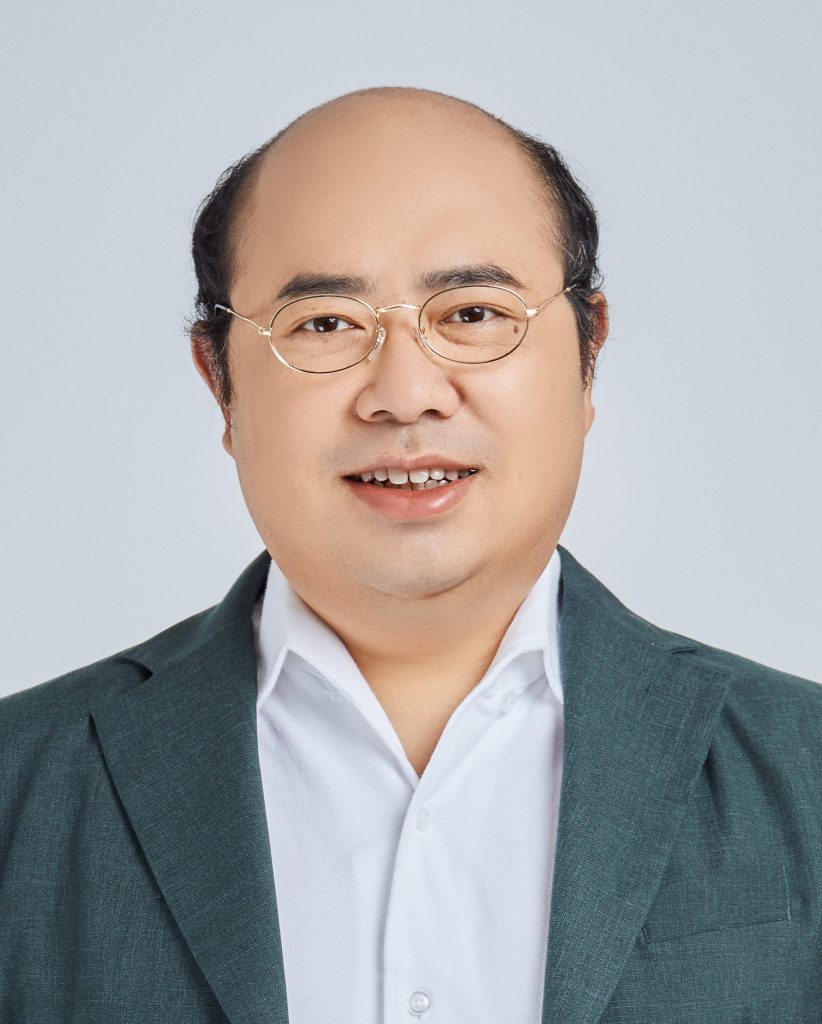
Wei Lin
(In-person)
Fudan University, China
Machine Learning Techniques Meet Complex Dynamical Systems: a Few Recent Advances
Abstract: In the era of big data, machine learning techniques, as the core of AI research, have been widely and efficiently used to deal with the observational data produced by the complex dynamical systems. In spite of the tremendous progress, the development of lightweight machine learning techniques are limited but highly anticipated for achieving systems reconstruction and evolution prediction. Here, we report a few advances in this direction, integrating dynamical system theory with causality analytics and lightweight recurrent neural networks. We demonstrate the efficacy of the developed approaches using several representative systems and their produced data of physical and biological significance. We also offer some perspective on the further development in this interdisciplinary research domain.
Bio: Lin Wei is a Distinguished Professor and Doctoral Advisor at Fudan University. He is jointly appointed at the Chern Institute of Mathematics at the Shanghai Center for Mathematical Sciences and is a leading scientist at the Pujiang Laboratory. He is dedicated to research in biomathematics, complex systems theory, and mathematical theory of artificial intelligence, as well as their interdisciplinary applications. He has been selected for several prestigious programs, including the National Science Fund for Distinguished Young Scholars in Mathematics, the Excellent Young Scientists Fund, the Chief Scientist of Key Projects in the National Key R&D Program, the Ministry of Education’s New Century Talent Program, and the Shanghai Rising-Star Program (Tracking) and Dawn Scholar Program.
Lin Wei is a Senior Member of IEEE, and has served as the Vice Chair of the Biomathematics Committee of the Chinese Mathematical Society, the Vice Chair of the Mathematical Life Sciences Committee of the China Society for Industrial and Applied Mathematics (CSIAM), the Vice President and Secretary-General of the Shanghai Society for Nonlinear Sciences, among other positions. He has received numerous awards, including the ICCM Best Paper Award, the Second Prize of the Fok Ying Tung Education Foundation for Young Teachers, Elsevier’s Highly Cited Chinese Researcher in the field of General Engineering, the First Prize of Shanghai Natural Science Award, and the Baosteel Education Award for Outstanding Teachers. He has held positions in the School of Mathematical Sciences and the Institutes for Brain Science and Technology at Fudan University.

Alexey Slunyaev
(In-person)
Institute of Applied Physics RAS, Nizhny Novgorod, Russia
Sea Wave Envelope Solitons and Rogue Waves
Abstract: As very well known, envelope solitons are exact solutions of the cubic nonlinear Schrodinger (NLS) equation. This equation can be derived from the primitive equations of hydrodynamics under the assumptions of small wave steepness and narrow spectrum in both, wavenumbers and wave propagation directions. Within the framework of the integrable NLS equation, envelope solitons, breathers, modulational instability and rogue-wave-solutions are deeply related and help to interpret, describe and predict the rich variety of nonlinear wave dynamics.
Oceanic waves are typically directional and broad-banded; under severe conditions waves become steep and tend to break, what seems to completely fall out the range of applicability of the NLS theory. Meanwhile, short groups of steep planar waves have been shown to be structurally stable – within the numerical simulation of primitive equations of hydrodynamics, and in laboratory experiments. These strongly nonlinear long-lived wave groups behave very similar to soliton solutions of the NLS equation and can be composed by close-to-breaking waves, thus may be called hydrodynamic envelope solitons.
In the series of recent works including the numerical and laboratory modeling, we show that the concept of envelope solitons (and its derivatives) and the Inverse Scattering Technique may be useful for the meaningful description of realistic sea waves, including events of extreme wave occurrence due to specific solitonic dynamics. Thus the idea of sea wave envelope solitons may be fruitful for identification of dangerous sea states and geographic/metocean conditions, and for elaboration of new approaches for a short-term deterministic forecasting of so-called rogue waves.
The research is supported by the Russian Science Foundation (project No 22-17-00153).
Keywords: envelope solitons, rogue waves, water waves, irregular sea waves, directional waves, windowed Inverse Scattering Transform, numerical simulation of hydrodynamic equations
Bio: Alexey Slunyaev graduated from the Nizhny Novgorod State University (Russia) in 1999; defended his PhD thesis (Mediterranean University, France) and the Candidate of Sciences thesis (Institute of Applied Physics RAS, Russia) in 2002. He earned the degree of Doctor of Sciences in Mathematics and Physics (habilitation) in 2016, and the honorary academic title Professor of the Russian Academy of Sciences in 2018.
Currently, Prof. Alexey Slunyaev is the head of laboratory for modeling of extreme wave phenomena in the ocean in the Institute of Applied Physics RAS (employed since 1999). In 2010-2012 he served as a Marie Curie Fellow in Keele University (UK); in 2019 he was an invited visiting researcher in the University of Sydney and the University of Southern Queensland (Australia). Alexey Slunyaev was awarded the Medal of the Russian Academy of Sciences with prize for young scientists (2006) and the Leonid Mandelshtam Prize of the Russian Academy of Sciences (2018).
Alexey Slunyaev also holds the position of Scientific Secretary of the Scientific Council of the Russian Academy of Sciences since 2006. He is a member of the editorial boards of the journals Radiophysics and Quantum Electronics and Physics of Wave Phenomena (Springer).
Scientific interests of Alexey Slunyaev include nonlinear asymptotic evolution equations and related wave dynamics; simulations of initial-value problems in application to sea surface waves and internal waves, nonlinear waves in hydrodynamics and other media. His particular interest is focused on the so-called rogue wave phenomenon: nonlinear generation mechanisms and models, simulations and the search for approaches for their prediction. He has published more than 70 journal papers, one monograph (Rogue Waves in the Ocean, Springer, co-authored) and several monograph chapters.